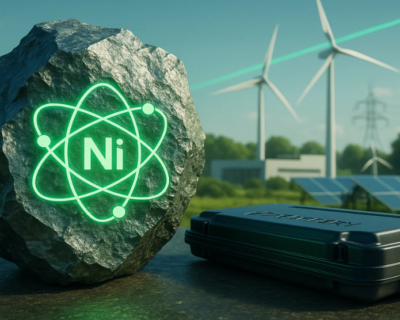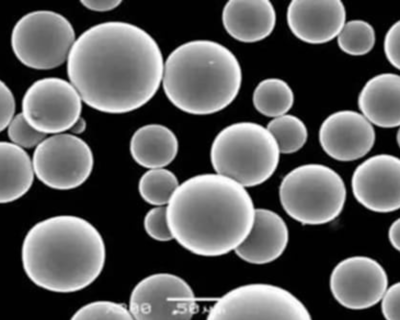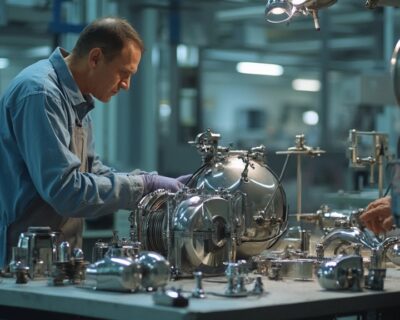Blogs

Understanding Types of Nickel Alloys: A Complete Tutorial for Engineers
Introduction
In the world of advanced materials, nickel alloys stand out as a cornerstone of innovation and reliability across various industries. Composed primarily of nickel and alloyed with elements like copper, chromium, and molybdenum, these specialized metallic materials are engineered to deliver exceptional performance in demanding environments. Their remarkable characteristics—ranging from outstanding corrosion resistance to high-temperature stability—make them indispensable in sectors such as aerospace, marine engineering, and chemical processing.
As global markets evolve and technology advances, understanding the unique properties and applications of nickel alloys becomes crucial for procurement managers seeking to optimize material selection and enhance operational efficiency. This article delves into the intricacies of nickel alloys, exploring their classifications, performance in corrosive environments, metallurgical aspects, and the pivotal roles they play in modern engineering applications.
Introduction to Nickel Alloys: Definition and Characteristics
These specialized metallic materials are primarily composed of types of nickel alloys, which are often mixed with elements such as copper, chromium, and molybdenum to enhance their characteristics for specific uses. These materials are characterized by exceptional corrosion resistance, high-temperature stability, and superior mechanical strength. Notably, they exhibit favorable characteristics such as good weldability, formability, and a low coefficient of thermal expansion.
This blend of characteristics positions types of nickel alloys as ideal candidates for a wide range of industrial applications, particularly in the aerospace, marine, and chemical processing sectors.
Domadia is proud to provide a wide selection of ultra-thin metal foils, including top-quality pure products recognized for their outstanding purity and dependability. Our foils are utilized in various applications, including aerospace components, electronic devices, and medical instruments. Our commitment to excellence and customer satisfaction ensures that you receive the best products tailored to your specific needs.
Based on recent data, 1,846,000 tons of this metal constitute 1.7% of the global reserves, emphasizing the importance of metal mixtures in the industry. Furthermore, a recent case study on nickel-related stocks analysis revealed that combined LME and Shanghai Futures Exchange (SHFE) stocks began 2023 at approximately 57,900t, with a destocking trend leading to LME stocks falling below 40,000 for the first time since 2007 by April. This trend highlights the significance of metal mixtures in fulfilling market needs.
As advancements continue in the field, the distinctive characteristics of types of nickel alloys not only enhance performance but also contribute to the sustainability and efficiency of various processes. To gain deeper insights into these materials and their uses, procurement managers are encouraged to explore further advancements in nickel compositions.
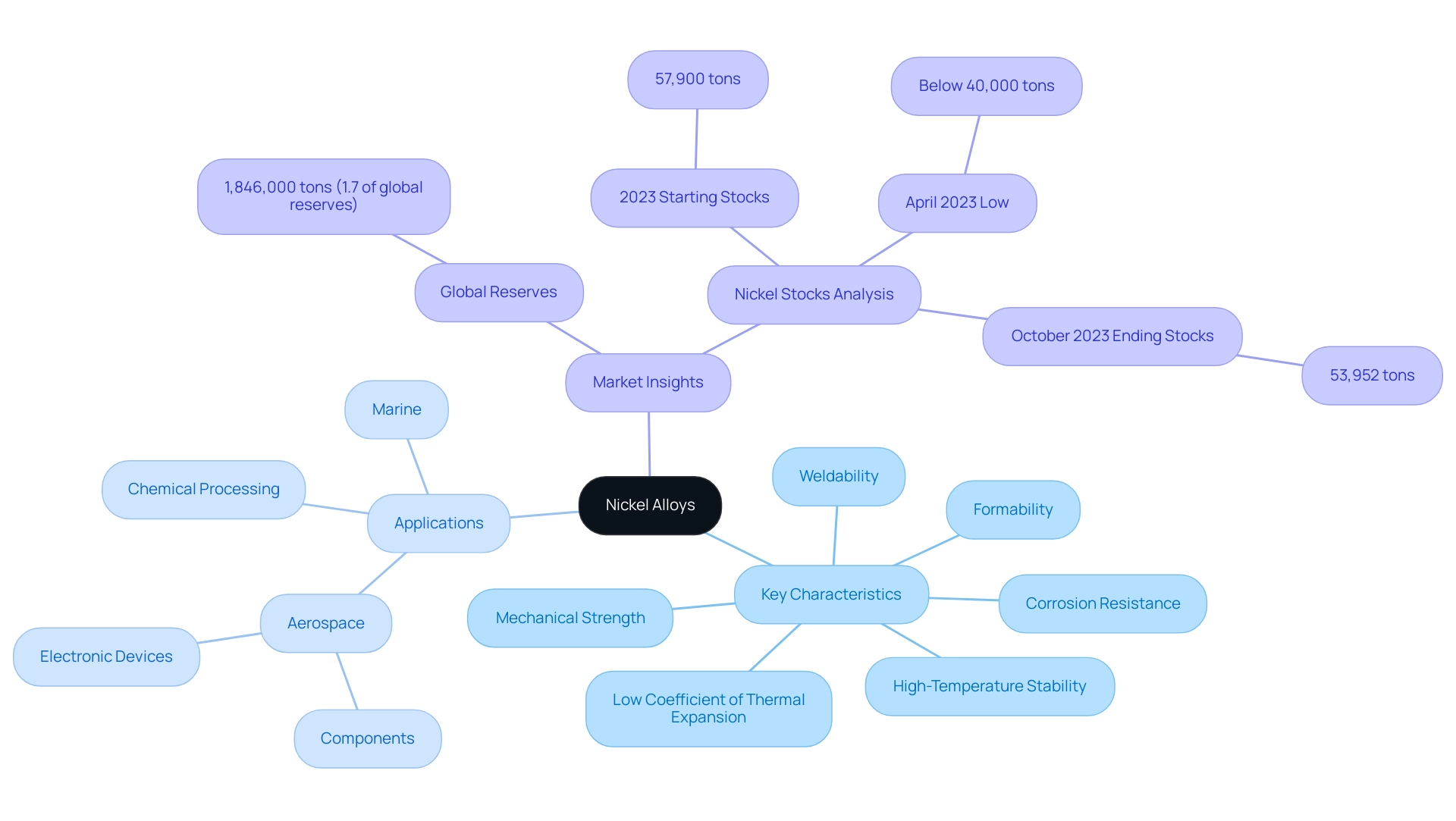
Exploring Different Types of Nickel Alloys and Their Applications
Nickel mixtures are categorized into several important groups, each with distinct characteristics and uses:
Nickel-Copper Compositions (Monel): Famous for their remarkable ability to withstand corrosion, these materials are frequently utilized in marine settings and chemical processing. Their capacity to endure tough conditions makes them a favored option in scenarios where longevity is critical. Traditionally, types of nickel alloys, especially nickel-copper combinations, have been utilized for numerous centuries due to their ease of fabrication and durability against corrosion, highlighting their significance in contemporary uses. Additionally, certain alloying additions can enhance passive properties or stabilize protective layers, further improving their performance in challenging environments.
Nickel-Chromium Alloys: This category includes Inconel and Incoloy, which are specifically engineered for high-temperature uses, particularly in aerospace and power generation sectors. These materials not only offer outstanding mechanical properties at elevated temperatures but also exhibit excellent oxidation resistance, enhancing their performance in demanding environments.
Nickel-Iron Composites (Permalloy): These are types of nickel alloys characterized by their high magnetic permeability, making them essential for electronic applications such as transformers and magnetic shielding. Their unique magnetic properties allow for effective energy management in various electronic designs.
Nickel-Titanium Compositions (Nitinol): These are one of the notable types of nickel alloys, recognized for their shape memory and superelastic properties, which play significant roles in medical devices and actuators. Their ability to revert to a predetermined shape upon heating allows for innovative solutions in minimally invasive surgery and other advanced medical technologies.
Surface Treatment of Cu-Ni Compositions: Practical applications of nickel-copper mixtures, particularly in marine environments, can be enhanced through effective surface treatment techniques. As highlighted in a case study, Cu-Ni mixtures can be mechanically and electrochemically polished, with specific pickling and bright dipping treatments recommended to remove oxides and enhance surface quality. Proper surface treatment not only enhances the appearance but also the performance of these materials, while adherence to environmental regulations is essential during chemical treatments.
The versatility of these metallic compounds highlights their significance across various industries, especially in settings requiring durability and efficiency.
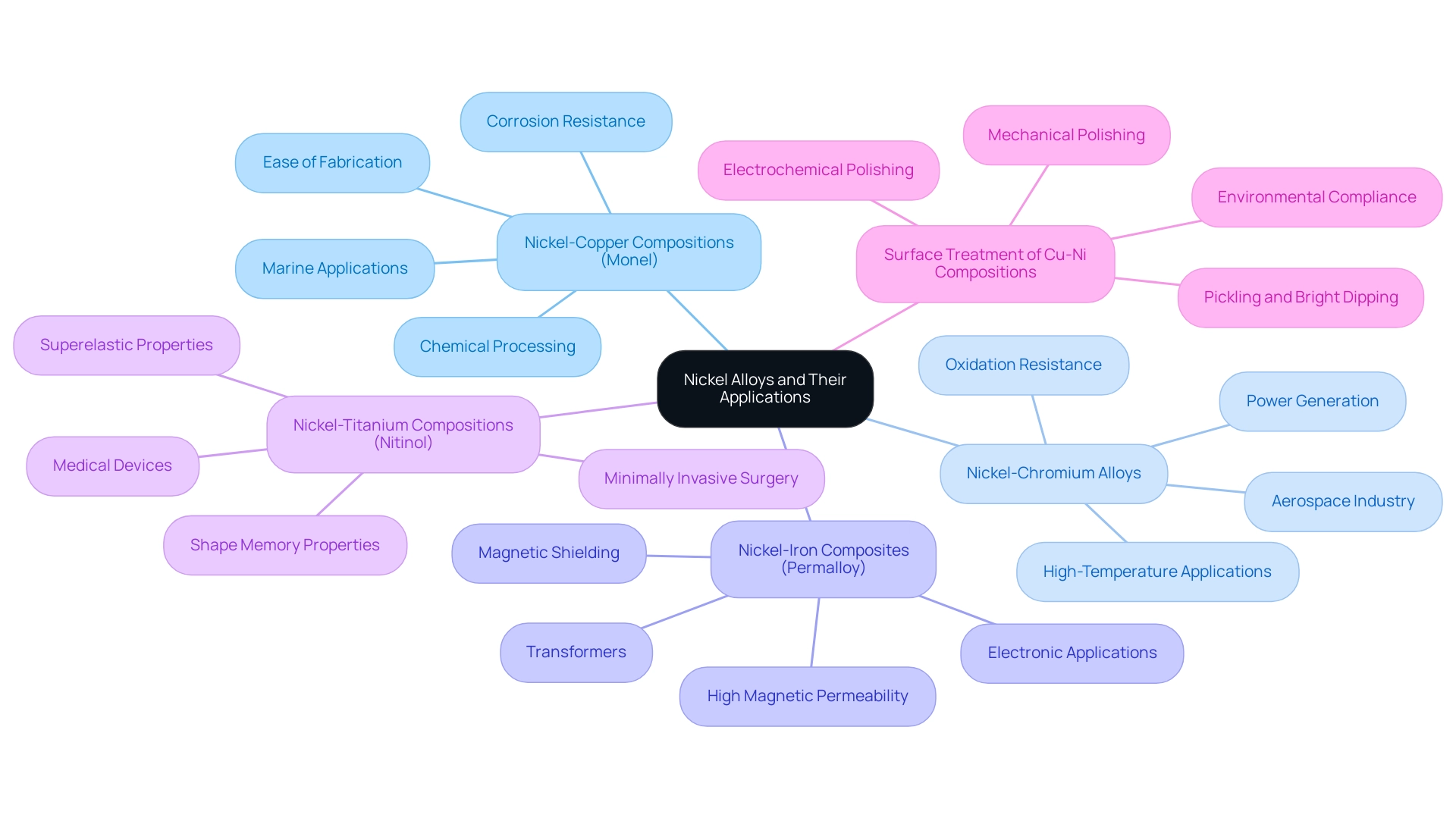
Performance of Nickel Alloys in Corrosive Environments
Copper-based mixtures, especially those containing copper, are well-known for their outstanding ability to withstand corrosion, particularly in difficult marine conditions. Frequently utilized in marine engineering for elements such as ship hulls, offshore platforms, and seawater piping systems, copper-copper alloys surpass stainless steel because of their enhanced corrosion resistance in saline environments. Recent investigations into the electrochemical behavior of these materials have revealed significant resilience, with electrochemical impedance measurements showcasing their robust performance against corrosive elements.
Furthermore, copper and its combinations are utilized in automotive systems for brake lines and hydraulic systems, benefiting from their excellent thermal and electrical conductivity, ductility, and antimicrobial properties, which help maintain hygiene in critical applications. In contrast, while Monel materials exhibit remarkable resilience against seawater and acidic environments, the types of nickel alloys, including Inconel compositions, maintain strength and oxidation resistance at elevated temperatures, making them indispensable in chemical processing. Case studies demonstrate that types of nickel alloys, such as copper-nickel, are particularly effective in handling complex processes, showing less susceptibility to stress corrosion cracking and pitting compared to stainless steels.
As Catherine Gao, a corrosion specialist, emphasizes, enhancing the performance of these materials through increased alloying elements and developing environmentally friendly composites is crucial for maximizing their antimicrobial benefits and overall effectiveness. Procurement managers must conduct thorough evaluations of the specific corrosive agents encountered in their applications to select the most appropriate metal combination, ensuring optimal performance and longevity in demanding conditions.
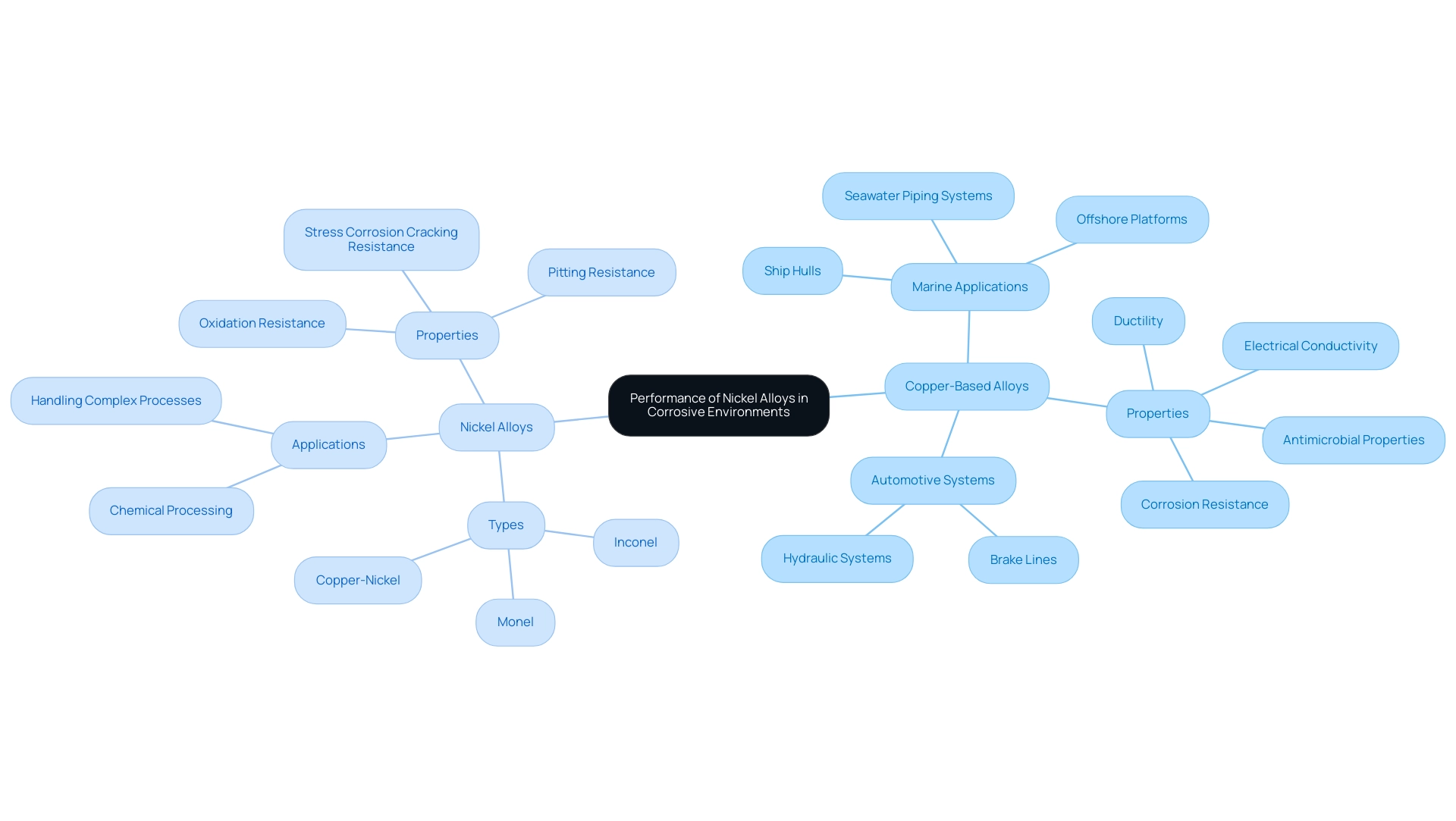
Understanding Nickel Alloy Metallurgy and Alloying Effects
The metallurgy of nickel mixtures is defined by a complex interaction between nickel and various combining elements, significantly affecting their characteristics, including strength, ductility, and corrosion durability. For instance, the inclusion of chromium not only enhances oxidation resistance but also contributes to the material’s overall durability. Molybdenum, conversely, is recognized for enhancing high-temperature strength, rendering it essential for use in harsh environments.
Comprehending these metal mixing effects is essential for engineers seeking to customize types of nickel alloys for specific applications, ensuring optimal performance across various operational conditions. Furthermore, the effect of heat treatment cannot be ignored; effective processes can change the microstructure of certain metals, improving their mechanical and physical characteristics. Recent research has established that the chromium-carbide aging temperature range falls between 425 to 760°C, indicating a critical parameter for achieving desired material characteristics.
As noted by metallurgical expert Karimihaghighi, ‘the results of this study revealed that corrosion of this metal evolves through different dynamic phases (or dynamic states), and that each phase involves several elementary steps.’ This emphasizes the complexities involved in choosing materials for specific environments. Moreover, the case study named ‘Electrochemistry of Nickel’ demonstrates the considerable importance of types of nickel alloys in electrochemistry, which affects battery uses and corrosion resistance.
This thorough comprehension is crucial for making informed choices in nickel procurement and usage. It is also important to acknowledge the contributions of M.A.E., M.A., H.Ç., and others in the experiments and data analysis, which lend credibility to the findings presented.
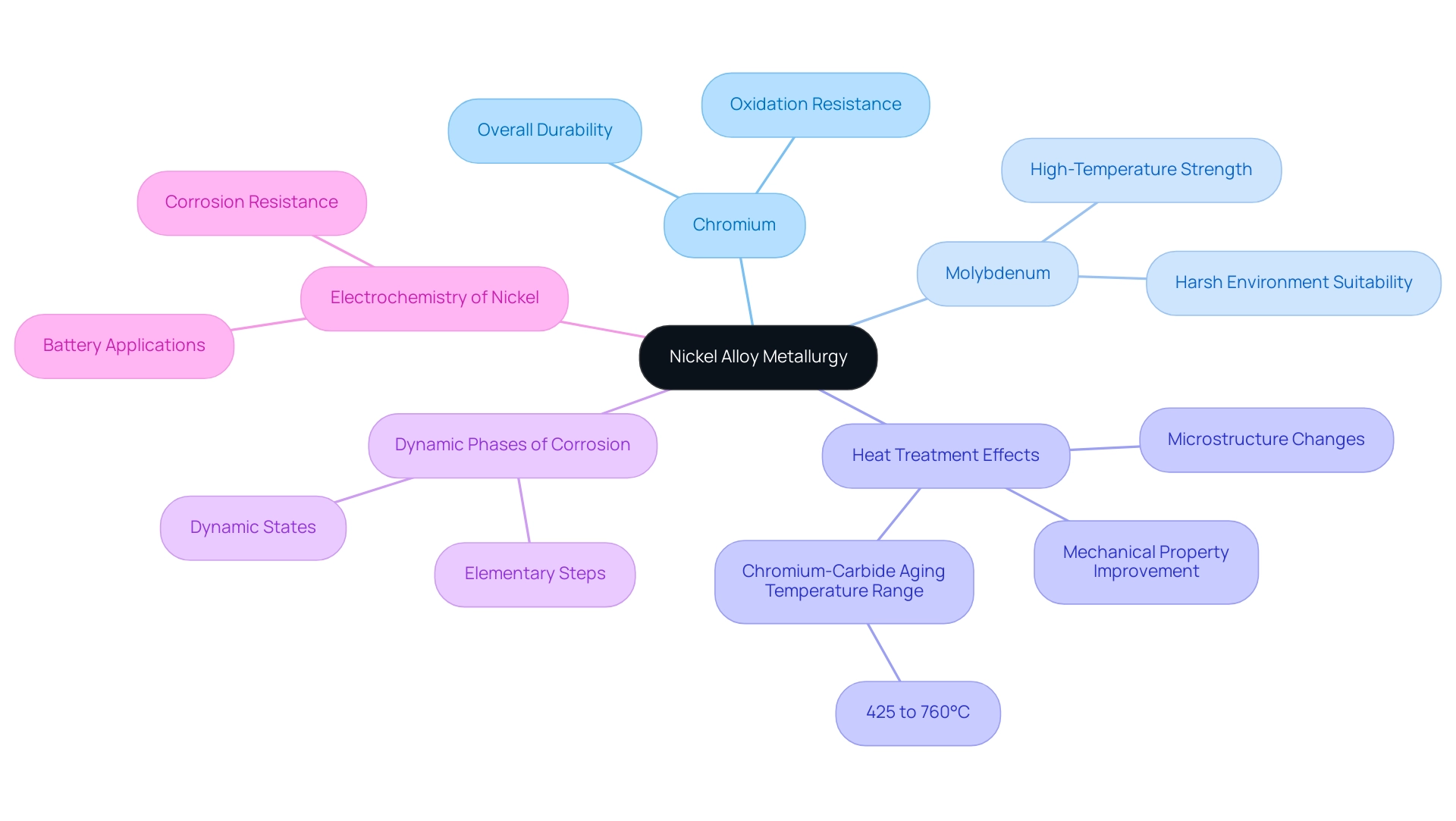
Applications of Nickel Alloys in Engineering and Industry
Nickel mixtures, particularly types of nickel alloys, are increasingly acknowledged for their exceptional properties, making them essential across multiple industries. Notable applications include:
- Aerospace: Nickel alloys are integral to the aerospace sector, utilized in engine components and structural elements. Their high-temperature strength and oxidation durability ensure reliability under extreme conditions, aligning with the stringent requirements of aerospace engineering.
- Chemical Processing: In the chemical processing sector, types of nickel alloys are essential for applications related to piping, heat exchangers, and reactors, where their exceptional ability to withstand corrosion is crucial. Recent expert opinions underscore their effectiveness in handling aggressive environments, further solidifying their role in this sector.
- Marine: The marine sector benefits from types of nickel alloys in ship construction and equipment exposed to seawater, leveraging their exceptional durability against corrosion. This property is crucial for enhancing the longevity and durability of marine vessels and infrastructure.
- Electronics: Different types of nickel alloys are found in various electronic components, including connectors that require excellent conductivity and resistance to environmental degradation. Their dependable performance is crucial for the increasing need in electronic uses.
- Medical Devices: Nitinol is one of the types of nickel alloys that is widely employed in the medical field, particularly in stents and guidewires. Its unique shape memory and biocompatibility make it an ideal option for advanced medical uses, ensuring safety and effectiveness in patient care.
At Domadia, we acknowledge the essential role of quality and reliability in these uses. Our dedication to unmatched quality assurance ensures our pure metal products undergo stringent quality control measures. With extensive industry experience, we offer a wide range of pure metal forms, including sheets, rods, and wires, tailored to meet diverse application needs, all at competitive pricing.
This commitment to quality establishes us as the perfect partner for your metal needs.
Customer testimonials emphasize our reliability: “Domadia’s metal products consistently surpass our expectations in quality and performance,” states a procurement manager from a prominent aerospace company.
Furthermore, companies like Sandvik are innovating within this space. In March 2021, Sandvik Additive Manufacturing formed a strategic alliance with Immensa Additive Manufacturing Group, a leading AM solution provider in the MENA region, to improve their abilities in metal applications. This partnership underscores the commitment to innovation in the field.
Furthermore, Sandvik’s launch of the Sanicro® 625 bar, created for sustainable manufacturing methods, illustrates how these materials can aid environmentally friendly processes while fulfilling the strict requirements of contemporary engineering. In April 2022, this bar was specifically aimed at promoting sustainable business practices and is utilized in machining advanced components in challenging environments.
The market demand for types of nickel alloys is also evident in sectors such as lithium-ion batteries and LNG, where their unique properties are increasingly leveraged to meet industry needs.
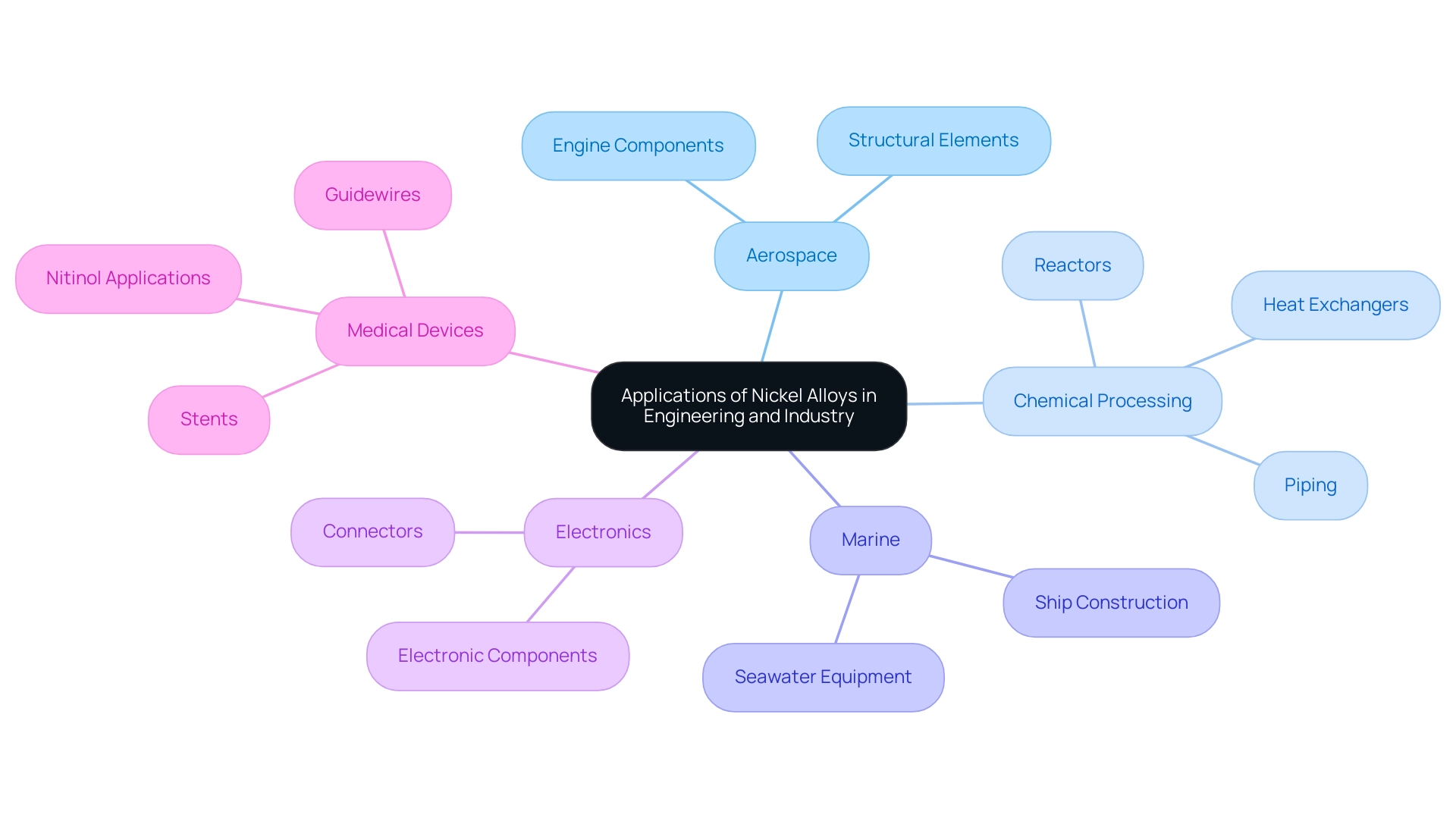
Conclusion
Nickel alloys are pivotal in modern engineering, characterized by their superior properties such as exceptional corrosion resistance, high-temperature stability, and mechanical strength. These materials, including nickel-copper, nickel-chromium, and nickel-titanium alloys, cater to a diverse range of applications across industries such as:
- Aerospace
- Marine
- Chemical processing
- Electronics
- Medical devices
Each alloy type presents unique advantages tailored to specific operational demands, positioning them as critical components in high-performance environments.
The performance of nickel alloys in corrosive settings is particularly noteworthy. Their resilience against harsh conditions, especially in marine applications, underscores their significance in enhancing the longevity and reliability of critical infrastructure. Furthermore, understanding the metallurgy and alloying effects is essential for optimizing these materials for specific tasks, ensuring that procurement decisions are informed by comprehensive knowledge of their properties and behaviors.
As industries continue to evolve, the strategic selection of nickel alloys will play a crucial role in meeting the increasing demands for efficiency and sustainability. With ongoing advancements in alloy applications and treatment methods, procurement managers are encouraged to stay informed about the latest developments to leverage the full potential of nickel alloys. The ability to optimize material selection not only enhances operational efficiency but also contributes to the sustainability goals of modern engineering practices, making nickel alloys indispensable in the quest for innovation and reliability.

